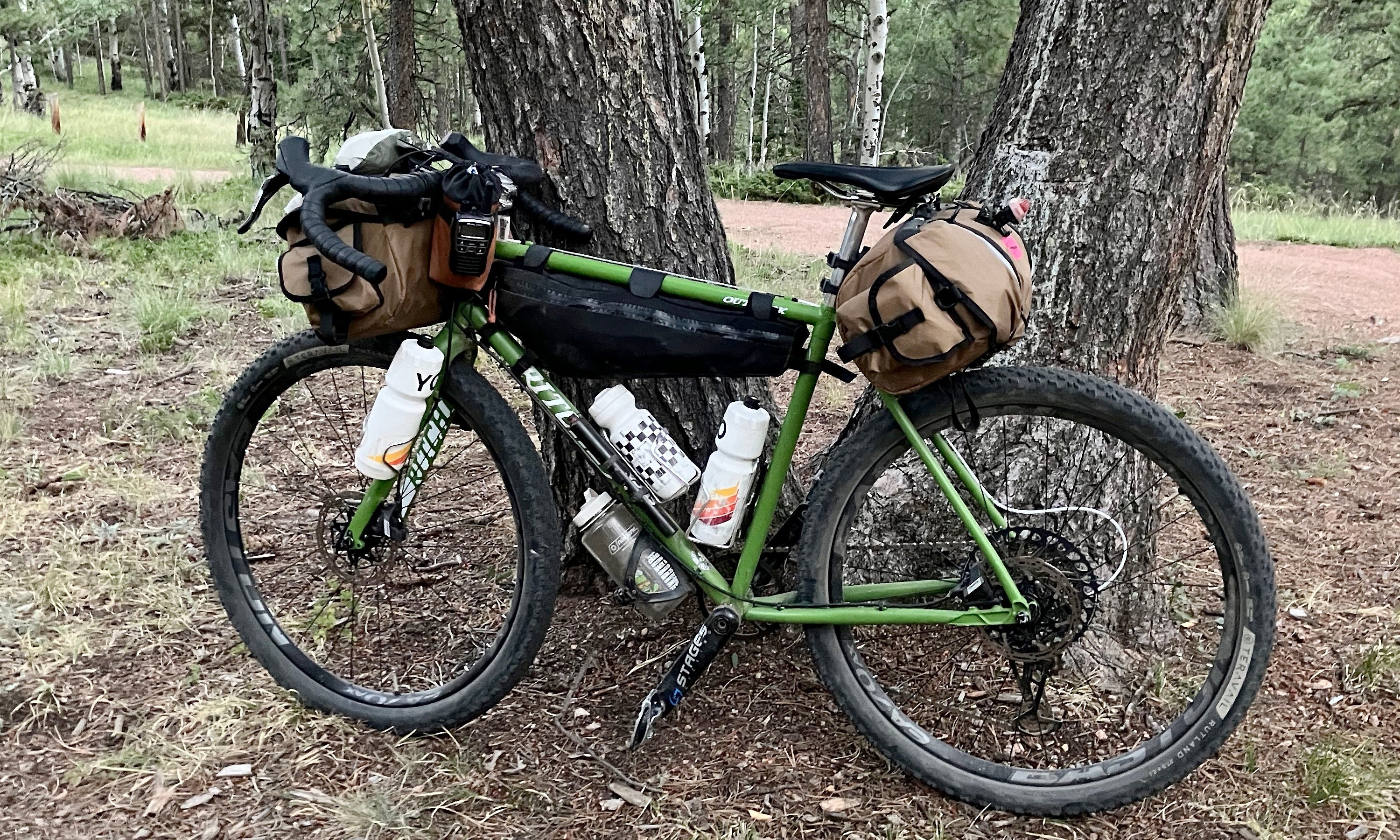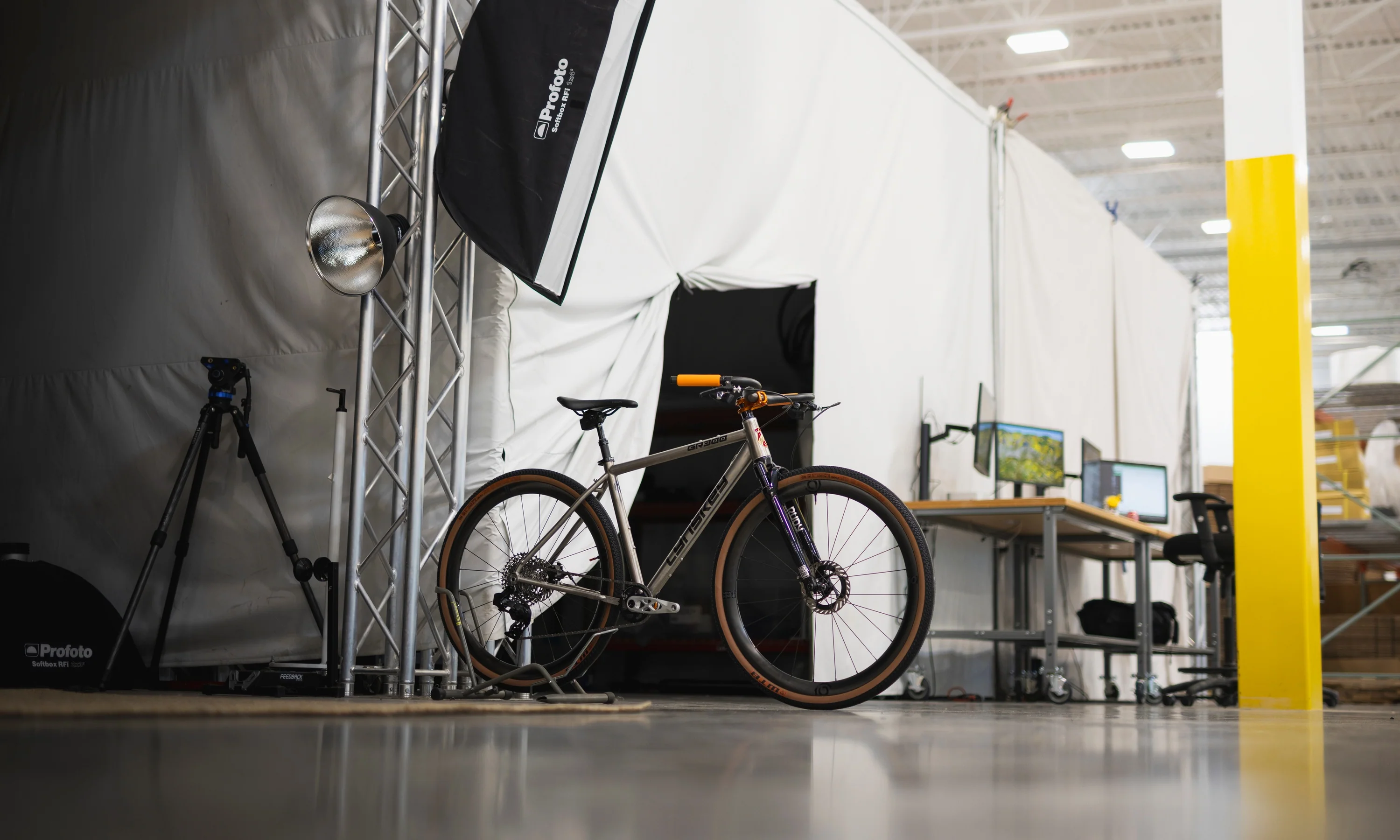Clockwise: Trek Madone SLR aero bike, Specialized Tarmac SL7 all-rounder bike, Bombtrack Arise gravel adventure bike, 3T Exploro RaceMax gravel race bike.
Modern cycling is a sport full of endless categorization. Bikes are designed and engineered to excel at particular types of riding, so bike categories have evolved as a way to neatly define what these bikes are meant to do. But with so much minutia, crossover, and opinion in the mix, bike categories can sometimes get muddy and confusing.
We’ve covered the MTB bike spectrum, so now let’s take a look at drop bar bikes. If you’re unfamiliar with the term, “drop bar” refers to drop handlebars, the curvy handlebars commonly found on road, gravel, cyclocross, and track bikes. If you’re not sure what the differences are between those bikes I just mentioned, then this guide is for you. We’ll break down the basics of the different types of drop bar bikes that aspiring cyclists should know.
The Drop Bar Bike Spectrum: The 7 Modern Bike Types
 For our purposes, the drop bar bike spectrum can be distilled into 7 basic categories:
For our purposes, the drop bar bike spectrum can be distilled into 7 basic categories:
- Aero Road Bikes
- All-Rounder Road Bikes
- Endurance Road Bikes
- Gravel Race Bikes
- Gravel Adventure Bikes
- Cyclocross Bikes
- Track Bikes
There are a couple of main characteristics that differentiate these categories — average tire size and geometry/handling — as well as a few more nuanced frame characteristics. Of course, there’s often a lot of overlap between categories, and there are always going to be outliers in each category. However, these key traits are generally reliable indicators of a bike’s intended purpose.
Note: Touring bikes have been omitted. They’re not very common, especially with the rise of endurance road and gravel bikes, and we very rarely sell them.
What's Relaxed vs. Aggressive?
When we use the words “relaxed” vs. “aggressive” to talk about bike geometry and handling, it can also be thought of as comfort-oriented vs. race-oriented.
Relaxed geometry puts the rider in a more upright and comfortable riding position. Relaxed frames have more stack height, slacker head angles, longer wheelbases, and lower bottom brackets. This means the handling feels more stable, so it requires less attention or energy to pilot the bike, especially over long distances or on rough terrain.
Aggressive geometry puts the rider in a lower and more stretched-out riding position, which is often better for aerodynamics. Aggressive frames have lower stack height, longer reach, steeper head angles, and shorter wheelbases. The handling will feel more agile, which helps riders react quickly in race situations or when riding in fast-moving groups.
Aero Road Bikes
 Cannondale SystemSix
Cannondale SystemSix
Average tire size: 25-30mm
Geometry/handling: Aggressive
Strengths: Road racing and high-speed riding on flat or rolling terrain
Aerodynamic drag is the greatest force that affects how fast a road cyclist can ride and how much energy they have to expend. Aero road bikes are designed to be as aerodynamically efficient as possible. They usually have sculpted frames and use lower riding positions and other aero components (like deep-section wheels) to try and cheat the wind. Because of this, aero bikes are often slightly heavier than all-rounder road bikes. They’re best for road racers or performance-oriented riders trying to go as fast as possible on flat or rolling roads.
Popular examples: Trek Madone, Cervelo S5, Cannondale SystemSix, Canyon Aeroad, Giant Propel
All-Rounder Road Bikes
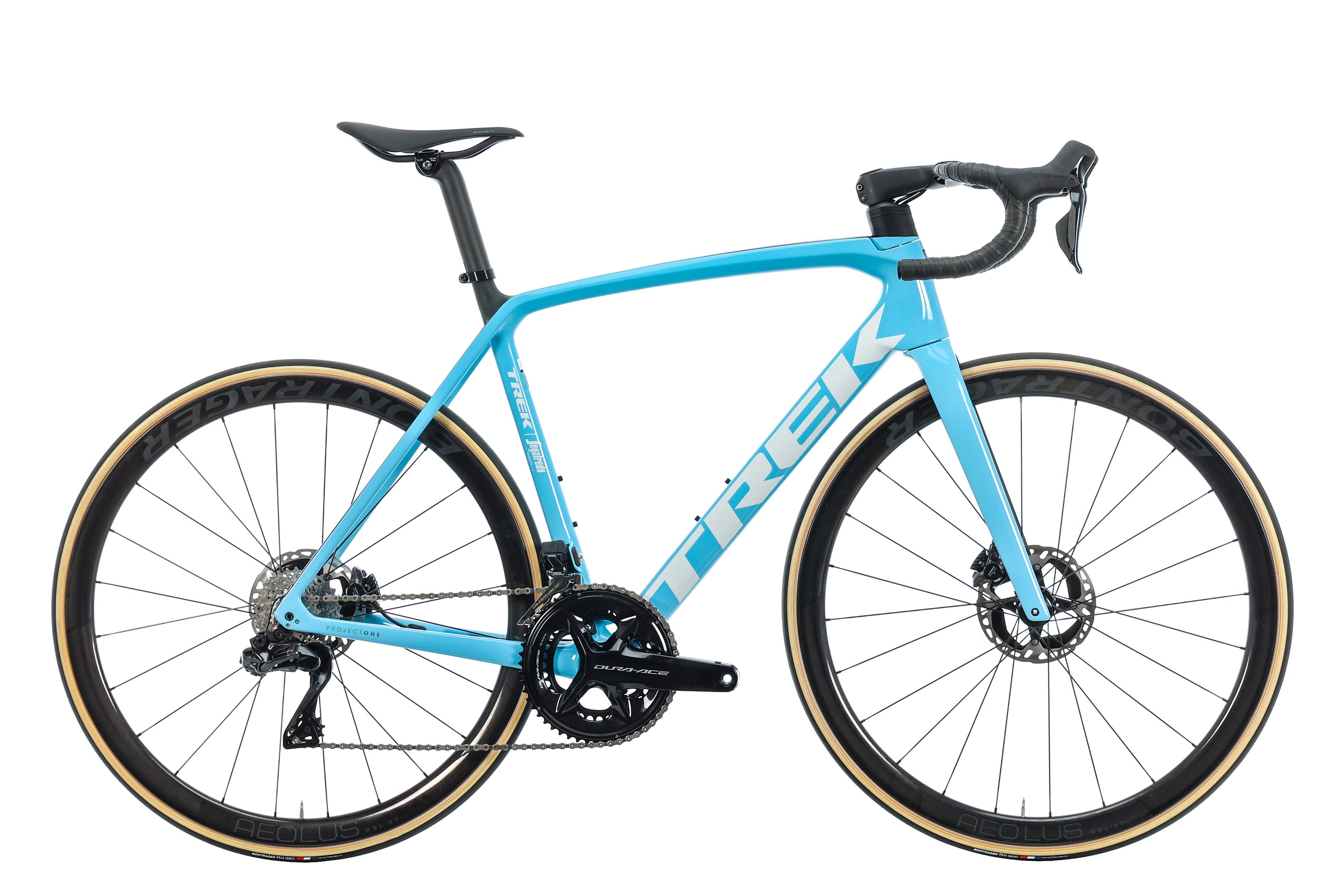
Trek Emonda SLR
Average tire size: 25-32mm
Geometry/handling: Aggressive to relaxed
Strengths: Climbing, road racing, general road riding
All-rounders are a more do-it-all style of road racing bike. All-rounder frames may be designed with some aerodynamic elements, but the other key focus is overall weight. The frame tubes are generally slimmer than a comparable aero bike to reduce weight, which helps all-rounders perform better on steep hills and long climbs. All-rounders often have geometry and handling that’s similar to aero bikes and are good for road racers and performance-oriented riders who want to excel on hillier or mountainous terrain.
Popular examples: Specialized Tarmac, Trek Emonda, Cervelo R5, Cannondale SuperSix Evo, Giant TCR
Endurance Road Bikes
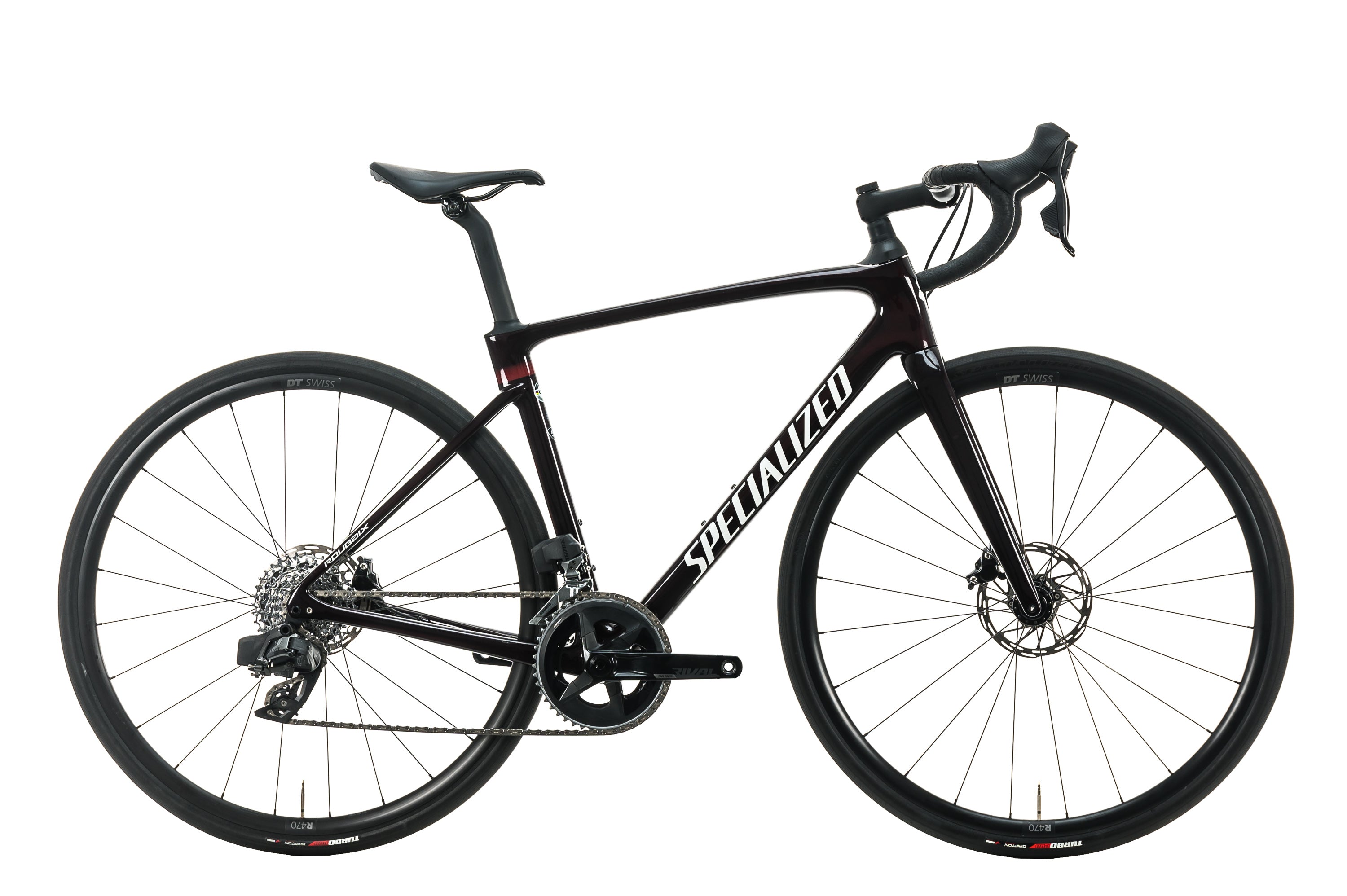 Specialized Roubaix
Specialized Roubaix
Average tire size: 28-38mm
Geometry/handling: Relaxed
Strengths: Rough pavement, long-distance riding, light mixed-terrain riding
Endurance road bikes place a greater emphasis on comfort and stability than aero or all-rounder road bikes. Endurance frames generally have more upright riding positions, compliance-enhancing features, and clearance for wider tires to enhance rider comfort. They are ideal for rough road conditions, light dirt and gravel, and long-distance rides, where bumps and vibration will increase rider fatigue. They’re also great for riders who don’t feel comfortable on more aggressive aero or all-rounder road racing bikes.
Popular examples: Specialized Roubaix, Trek Domane, Cannondale Synapse, Canyon Endurace, Giant Defy
Gravel Race Bikes
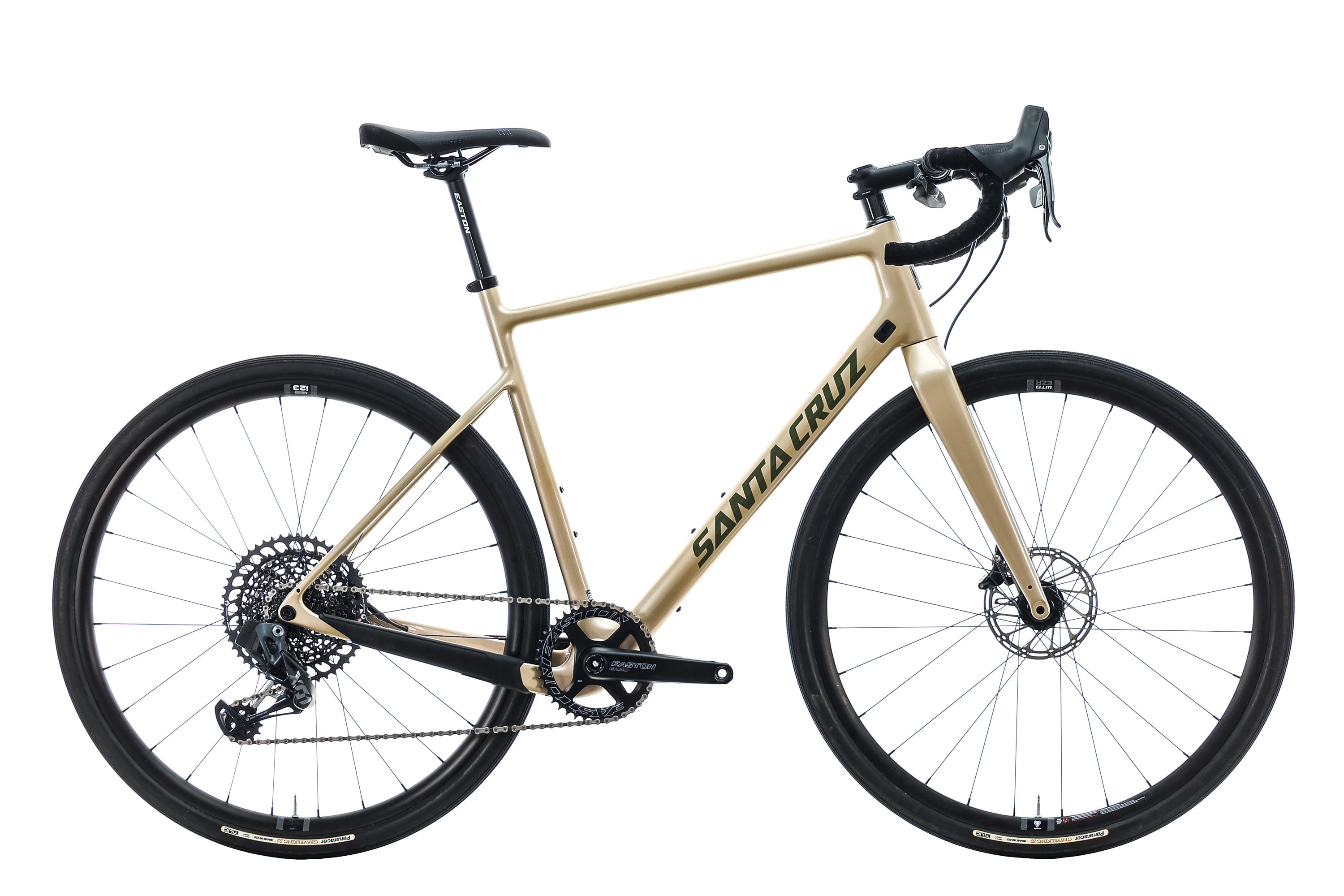 Santa Cruz Stigmata
Santa Cruz Stigmata
Average tire size: 38-45mm
Geometry/handling: Aggressive to Relaxed
Strengths: Gravel racing, unpaved roads, general mixed-terrain riding
There are tons of different gravel bikes so to keep things simple we are separating them into “race” and “adventure” categories, but you don’t need to be interested in racing to enjoy a gravel race bike. We're just calling them that because these bikes are "faster" on more surfaces than adventure bikes. Some might call these “all-road” bikes, but that term is less popular. This style of bike excels on unpaved dirt and gravel roads but can handle everything from smooth pavement to singletrack trails. There’s a wide range of geometry and handling options, but in general, they are more relaxed than road bikes so they’re more confidence-inspiring on unpaved roads. They are the most versatile type of bike on the market and can be used for everything from daily commuting to ultra-endurance gravel racing.
Popular examples: Specialized Crux & Diverge, Trek Checkpoint, Cannondale Topstone, Cervelo Aspero, 3T Exploro
Gravel Adventure Bikes
 Salsa Cutthroat
Salsa Cutthroat
Average tire size: 45-57mm
Geometry/handling: Relaxed
Strengths: General mixed-terrain riding, singletrack trails, bikepacking
Gravel adventure bikes are separated from gravel race bikes because they are much more similar to mountain bikes in terms of geometry, tire clearance, and their intended purpose. Because they have even more relaxed geometry and can fit larger tires, gravel adventure bikes are better on rougher terrain and singletrack trails than standard gravel race bikes, but they will be more sluggish on smooth gravel and pavement. Gravel adventure bikes are a popular choice for bikepacking, where riders carry camping gear on their bike to explore the wilderness.
Popular examples: Salsa Cutthroat, Kona Sutra, Bombtrack Beyond, Rodeo Labs Flaanimal, Otso Warakin Stainless
Cyclocross Bikes
 Ridley X-Night SL
Ridley X-Night SL
Average tire size: 33-35mm
Geometry/handling: Aggressive
Strengths: Cyclocross racing
Before gravel bikes became popular, cyclocross bikes were the main mixed-terrain drop bar option. The difference between cyclocross and gravel bikes is that cyclocross bikes are designed to excel at cyclocross racing, which involves tight turns and running with the bike. The geometry is more aggressive to handle quick direction changes, and the frame is designed to be shouldered easily while running. While they’ve become less common with the advent of gravel bikes, they’re still a great choice for riders who want a bike that excels on paved and unpaved roads.
Popular examples: Trek Boone, Specialized Crux, Giant TCX, Cannondale SuperX & SuperSix Evo CX, Scott Addict CX
Track Bikes
 All-City Thunderdome
All-City Thunderdome
Average tire size: 23-25mm
Geometry/handling: Aggressive
Strengths: Track racing
Some riders might refer to track bikes as “fixed-gear bikes” or “fixies.” There’s a range of track bikes, from bikes that are intended for racing on dedicated tracks, called velodromes, to urban bikes that are valued for their simplicity and durability. The key element is that these bikes have a single gear that is “fixed” to the rear wheel, meaning you can’t coast. It is the oldest, simplest, and most reliable drivetrain design. Dedicated track bikes don’t have brakes, which is safer on a high-speed velodrome. For safety, urban fixies riding on the road should have brakes, but some riders go without and stop by applying back pressure on the pedals or skidding.
Popular examples: Specialized Allez Sprint Track, BMC Trackmachine, State 4130, All-City Thunderdome


